Modern Montblanc watches powered by Minerva movements
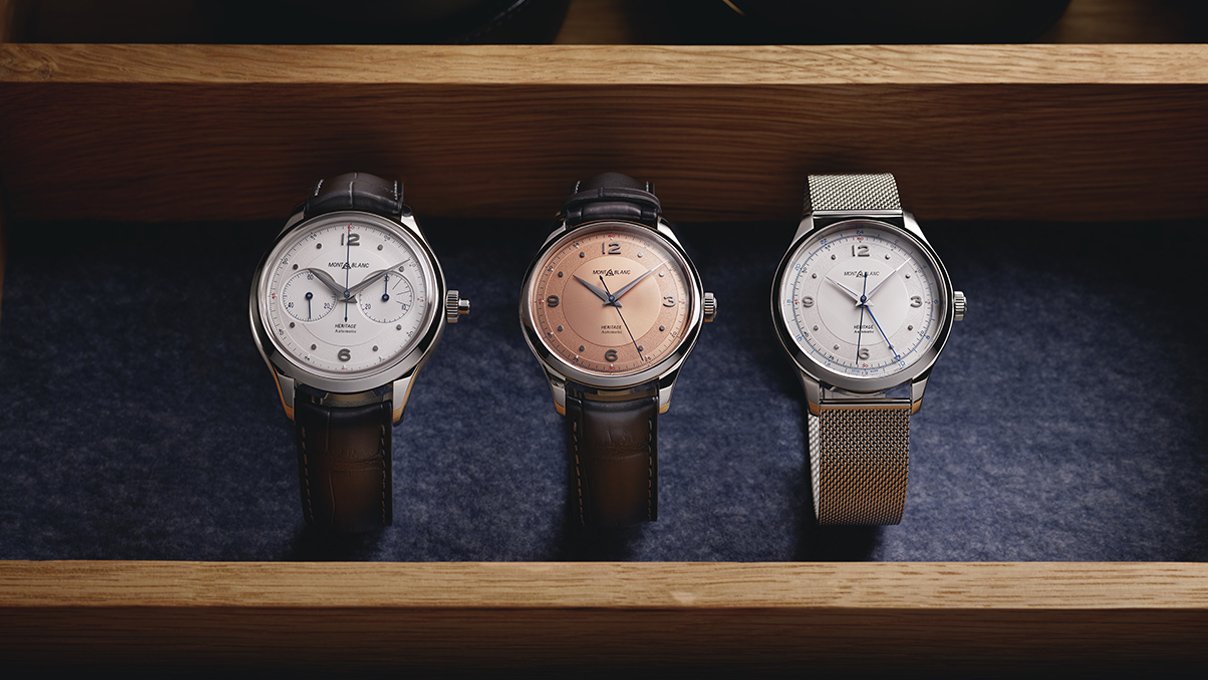
Published: Aug 02, 2022
Behind a whole universe of luxurious writing instruments at Montblanc is a treasure trove of beautifully manufactured wristwatches. Amongst many examples of meticulous attention to detail and extraordinary handcrafted leather goods, Montblanc’s watches are, without a doubt, some of the most beautiful on the market right now and some of that is down to taking Minerva under its wing back in 2006. After the brand was bought by Richemont in 1993, Montblanc has invested in its own buildings in Le Locle, nestling itself deep in the Vallée des Joux – a backdrop with natural surroundings that have since become the inspiration behind many of Montblanc’s watchmaking hallmarks.
Back around the time that Montblanc was celebrating its 100th anniversary, Richemont acquired a chronograph manufacture movement named Minerva that had originally been developed back in 1858. The movement became fully integrated into the company’s manufacturing processes and rather than a merging of companies as such – Minerva spearheaded Montblanc’s movement manufacture, catapulting the company overnight into a successful manufacturer of highly complicated chronograph wristwatches, hairsprings and tourbillons. Then, in 2006, Richemont made another bold move that not only likely saved the heritage of Minerva but contributed to the growth and popularity of Montblanc’s higher-end wristwatches – it acquired Minerva and its production facilities.

Minerva heritage
Minerva’s roots stretch right back to the year 1858 when the company was founded by two brothers near to St-Imier - Switzerland’s horological centre. After changing its name a few times, it began to build a reputation for itself, creating its very own calibres and becoming known as a reliable manufacturer. It delved into the chronograph market during the early 1900s, creating the calibre 9-CH for the first chronograph pocket watch. From then onwards, Minerva chronographs for the wrist were developed for use during competitive sports during the 1930s, winning the company the title of official timing partner of the Olympic games of Garmisch-Partenkirchen in 1936. One of the company’s most beautiful in-house movements ever produced was the Calibre 13-20 CH, enabling Minerva to remain one of the very few manufacturers to produce its own chronograph calibres. The movement was initially designed as a column wheel mono-pusher chronograph but was soon modified to a double-pusher and was implemented into waterproof watches.
Minerva survived the crushing effects of the quartz crisis during the 1970s and 1980s and continued to operate as an independent business. After developing pocket counters that were capable of performing at 1/100 seconds, the company even entered the Guinness book of records before being sold to the Richemont group in the year 2006. Richemont held onto the original building and its team of employees responsible for producing movements that powered both Panerai and Montblanc chronograph watches. Minerva’s affiliation with Montblanc meant that it soon became recognised as the “Institut Minerva de recherches en Haute Horlogerie" and, since Minerva movements have always remained elite and limited in production, these specially developed calibres were reserved for only the most exquisite and high-end of Montblanc watches.
Montblanc both understands and appreciates the savoir-faire and techniques upheld at Minerva and has focussed heavily on upholding these values since using its calibres to power its refined watches. Making use of Minerva’s heritage has become a huge driving force in Montblanc’s evolution as a leading Swiss watchmaker.
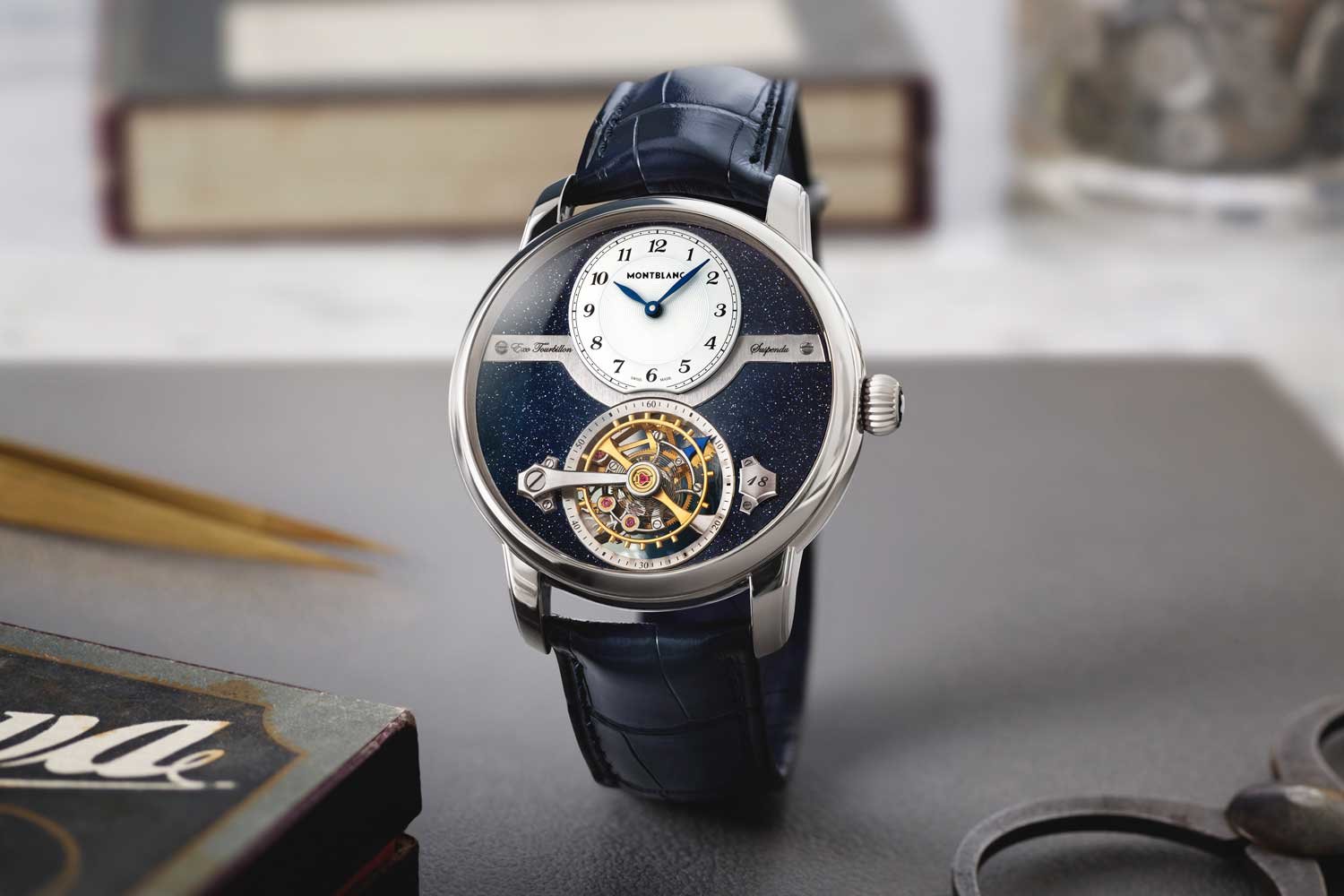
What makes Montblanc Minerva watches so popular?
When Montblanc acquired Minerva almost two decades ago, it not only meant becoming associated with an attractive company name that had over 150 years of expertise behind it. Rather, it included the rights to every calibre manufactured by Minerva. In addition to this, Montblanc had access to every piece of machinery used by Minerva along with its traditional watchmaking headquarters in Villeret and its archives. These headquarters were then inaugurated in October 2008.
One important factor to consider when investing in a Montblanc watch is that the manufacturer offers watches at three levels. Firstly, there are the Montblanc watches that are powered by third-party movements. These bought-in movements are those such Sellita movements and are done so to reduce costs for both the manufacturer itself and the consumer. Secondly, Montblanc offers watches that it calls its flagship models such as the Geosphere. These watches are made in-house by specialists at the company’s manufacturing facilities but are not powered by Minerva movements. The top tier collection offers wristwatches that are developed in-house right down to the hairspring. These are identified by the exclusive Minerva lettering that appears on the movement bridge, signalling a design that has been developed from the ground up by Montblanc and its adopted Minerva heritage.
At Montblanc, watchmaking is adhered to in a very traditional way using time-honoured methods that are still considered highly important and valued. One sole watchmaker will take care of a wristwatch from start to finish. Only the cases and straps are manufactured to the company’s requirements, all other processes are hand-applied. For this reason, it is understandable how Montblanc can develop no more than around 100 monopusher chronographs per year.
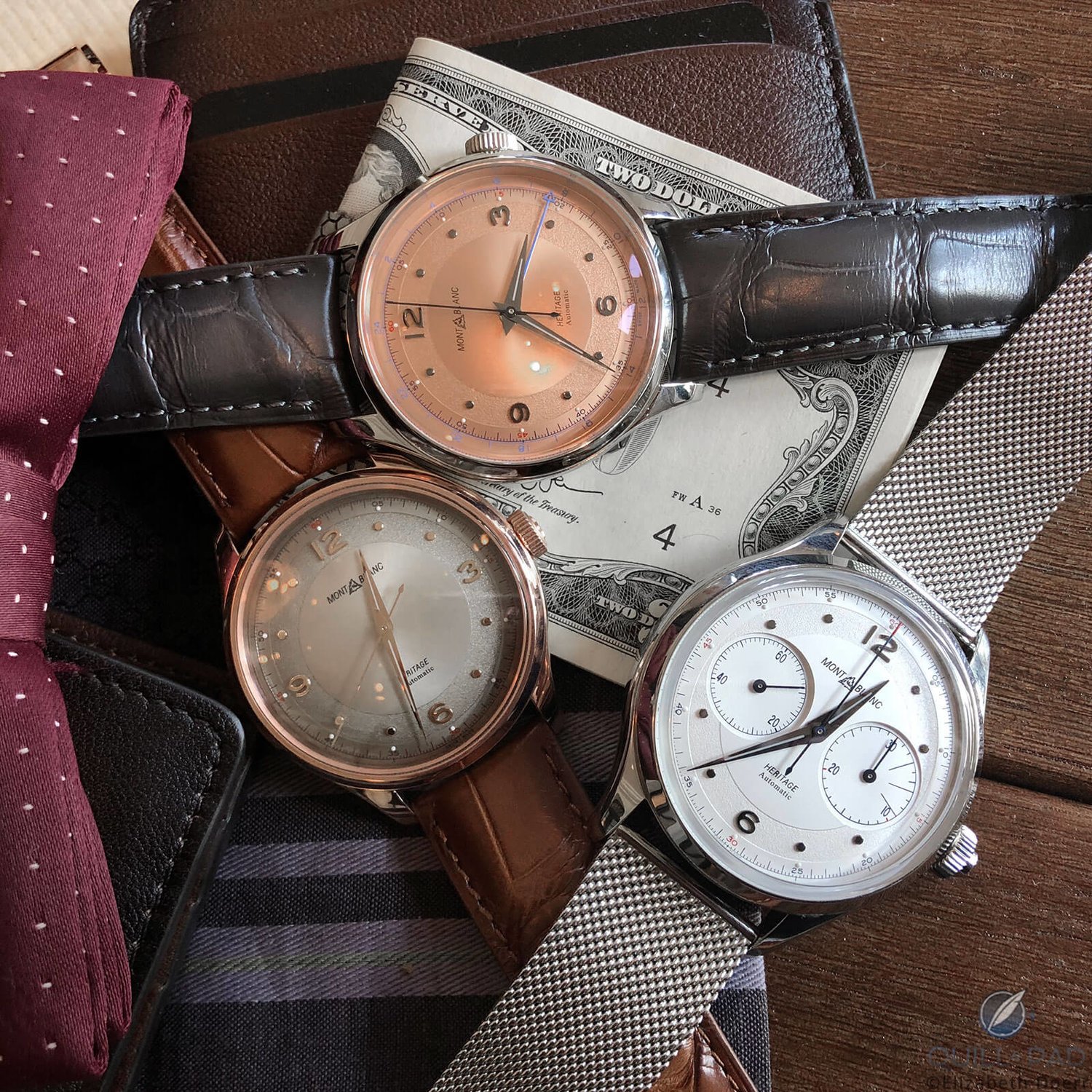
Montblanc watches with Minerva movements
The Montblanc 1858 Split Second Chronograph Limited Edition 100 In Titanium ref: 126006
The first collection to signify Montblanc’s convergence with Minerva was the Villeret 1858 series which now goes by the name of 1858. The Montblanc 1858 Split Second Chronograph Limited Edition 100 is an oversized titanium model powered by the manually wound MB M16.31 calibre, which is based on the 17.29 pocket watch movement developed in the 1930s by the Villeret watchmakers. Its gradient blue "grand feu" enamel dial is adorned with painted Arabic numerals and cathedral hands – all of which have been treated with luminous material to assist with timekeeping at night. It also features a beige chronograph seconds hand, an orange split-seconds hand and the historical Montblanc emblem emblazoned onto the surface of the dial at 12 o’clock. A tachymeter scale is also present at the centre of the dial, paired with a telemeter around the display’s exterior. The MB M16.31 Calibre is an in-house hand-wound movement produced by Minerva that performs inside a 44mm grade 5 titanium case water-resistant to 30 meters. The monopusher chronograph provides a split-second feature and comprises two column wheels and horizontal coupling, offering 50 hours of power reserve and features rhodium-plated German silver mainplate and bridges.
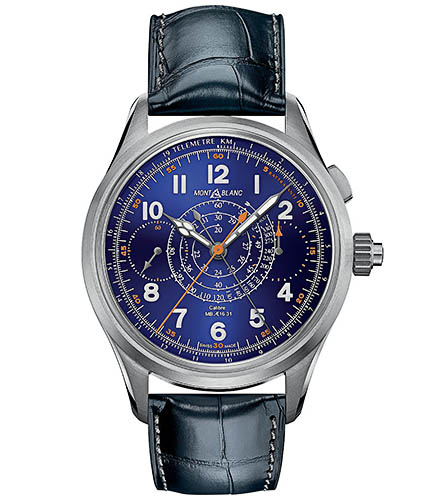
Montblanc 1858 Split Second Chronograph Limited Edition 100 In Titanium
Reference: 126006
Case/Dial: 44mm Titanium, blue
30 mt
Movement: MB M16.31, Self-winding
Functions: Chronograph
Strap: Leather
Style: Chronograph
The Montblanc Heritage Small Second Limited edition 38 watch ref: 124781
The Montblanc Heritage Small Second Limited Edition 38 model was released in 2019 and remains a highly sought-after modern wristwatch powered by an original Minerva movement. Presenting the time on a stunning salmon-coloured dial, it features a two-toned grained and sunray finished display with a small second sub-counter at 6 o’clock and polished dauphine-styled central hour and minute hands. Applied dot hour markers join traditional Arabic numeral markers around the hour track and the central hands have received a thin line of luminous material. This 39mm stainless steel model is 50-meter water-resistant and limited to just 38 pieces worldwide. It holds the Minerva-based MB M62.00 Calibre at its heart. The hand-wound engine propels at a rate of 18,00 vibrations per hour and features a balance wheel regulated by screws. It produces a 50-hour power reserve and boasts bridges and plates in a stunning rhodium-coated German silver along with 162 individual hand-assembled and hand-finished components.
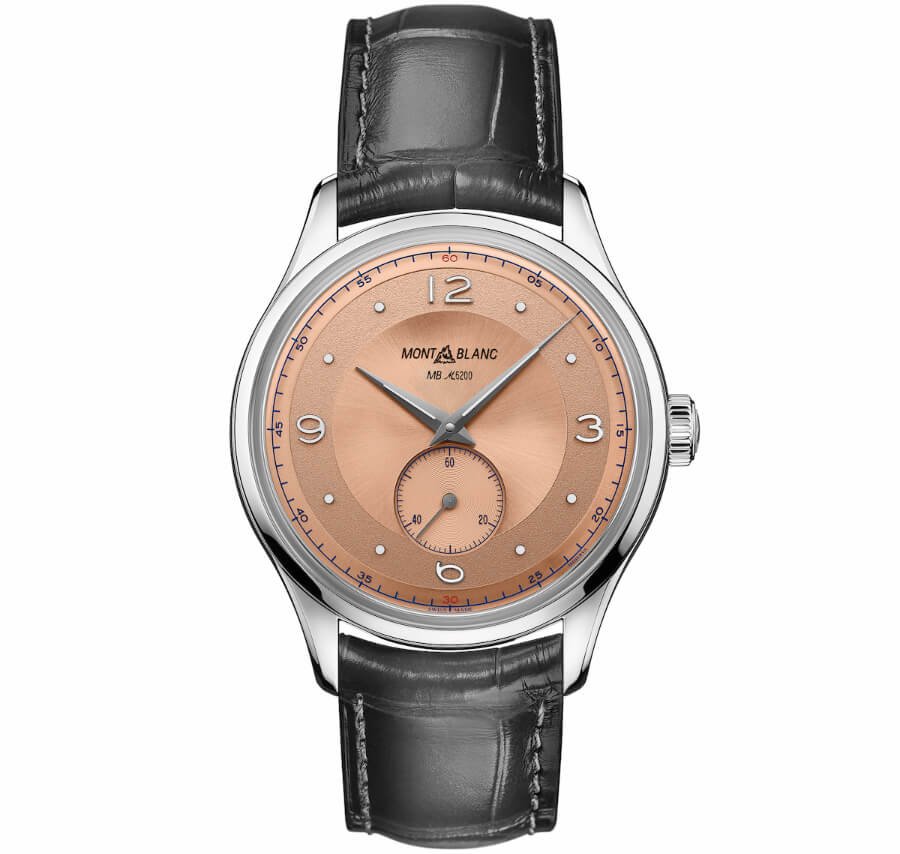
The Montblanc Heritage Small Second Limited edition 38
Reference: 124781
Case/Dial: 39mm Stainless steel, Salmon
50
Movement: MB M62.00, Self-winding
Functions: Hours, minutes, seconds, 50h power reserve
Style: Elegant
Montblanc 1858 Geosphere Limited Edition Ref. MB128504
Lastly, and for something a little different, the Montblanc 1858 Geosphere Limited Edition bronze watch is not powered directly by a Montblanc movement but certainly nods to its Minerva heritage with a design inspired by 1930’s professional Minerva watches. With the new limited edition Montblanc 1858 Geosphere watch, you get both hemispheres in one dial. It is, in effect, two world timers in one. It has no city ring around the outer edge but still highlights local time with the thicker longitude line. Both the primary and secondary hour hand can be set via the crown and the hidden pusher respectively. The world time complication features two domed globes rotating in opposite directions in this bronze watch design. They complete a full rotation every 24 hours. The 24 time zones surround each scale, as well as a day and night indication which appear in different colours for optimum contrast. Timekeeping is aided at night by luminous material applied to the surface of the Arabic numerals around the hour track and the stunning cathedral-shaped hands that make an appearance throughout the entire 1858 watch collection. Montblanc’s familiar compass-style bidirectionally rotating bezel features the cardinal points in the North, East, South and West locations, appearing at night in a matching luminous glow that looks aged in appearance during the day. The bezel is filled with a luxurious brown ceramic to accompany the sandy-beige fumé dial inspired by Messner's extraordinary 1,200-mile solo trek across the Gobi desert, which took a total of 5 weeks to complete. The Montblanc 1858 Geosphere Limited Edition watch is actually powered by the Calibre MB 29.25, based on the Sellita SW300-1 movement. It features a flat hairspring, comprises 26 jewels and produces a power reserve of 42 hours.
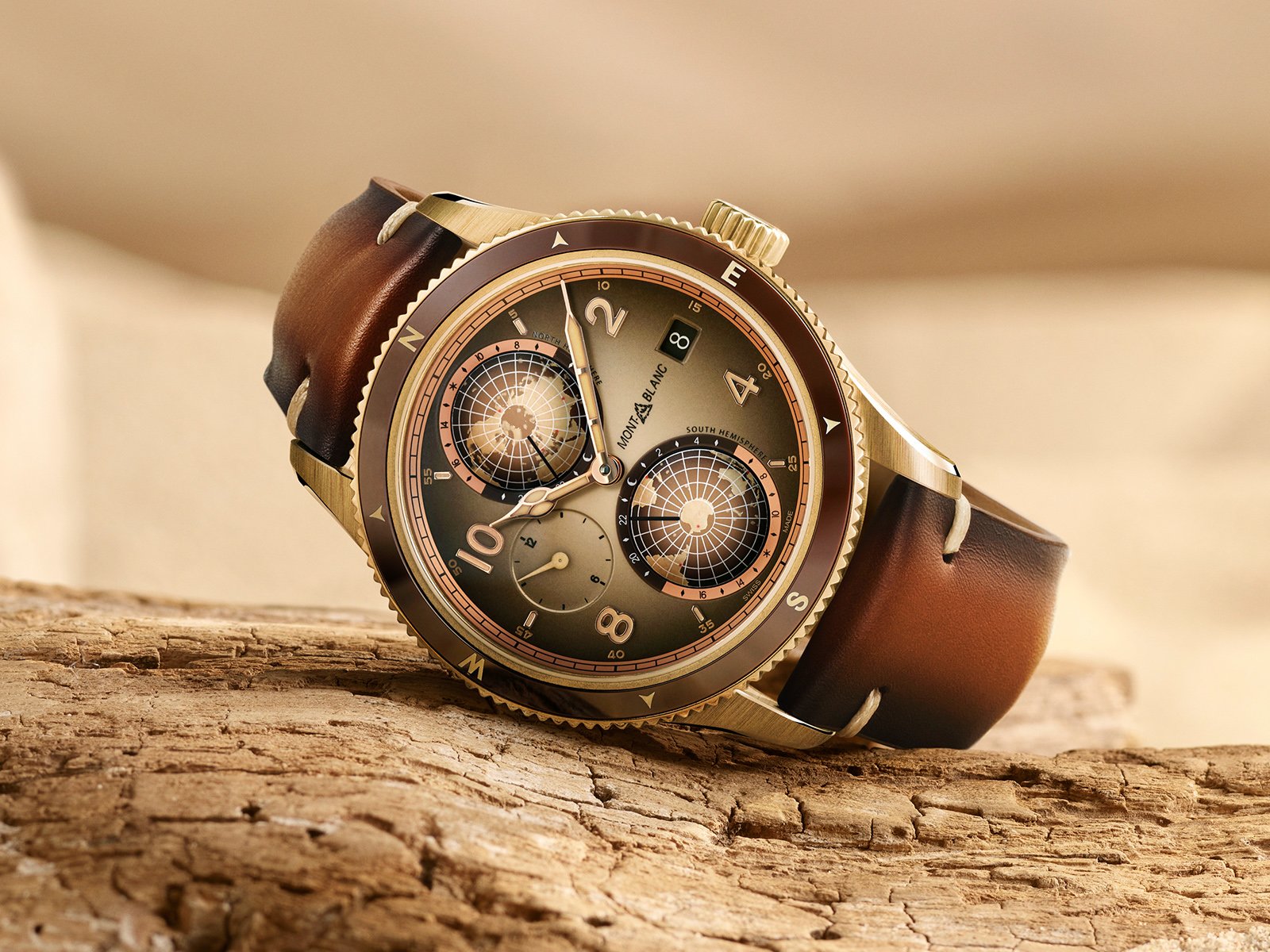
Montblanc 1858 Geosphere Limited Edition
Reference: MB128504
Case/Dial: 42mm Stainless steel, Black
100
Movement: MB 29.25, Self-winding
Strap: Leather
Style: Dress